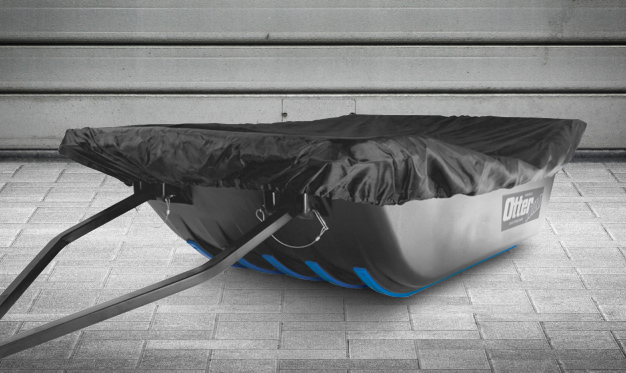
All good things come to an end, eventually. The current ice season will be no exception. For many of us in the Ice Belt, we’re down to the final few precious weeks of ice time, due to the sun’s ever-intensifying impact on the snow and ice that blankets our favorite fisheries.
And while nobody is calling the official end to the season just yet, it certainly isn’t too early to start thinking about how to properly store your Otter portable ice house once you’ve walked off the ice for the final time this winter.
Your Otter ice house has been built to withstand the harshest conditions and toughest trail miles an ice angler could ever throw at it. But that doesn’t mean your Otter doesn’t deserve a thorough going over before putting it up for the summer.
“I start my storage process by setting up my house so I can get at everything and do a careful inspection without the folded canvas getting in the way,” says ICE FORCE Pro-Staffer James Holst, host of In-Depth Outdoors TV. “Now’s the time to clean house looking for any misplaced gear, tackle or trash that might be floating around in the bottom of the tub.”
After removing everything, Holst rinses and washes out his sled, “making sure I’ve found all the dead minnows that will be waiting for me next fall should they be overlooked.” He finishes up by giving the canvas a careful inspection, checking for any rips or holes that can be easily patched using one of the canvas repair kits Otter sells on their website.
“If the canvas passes the visual inspection,” he continues, “I hit the exterior with a hose to remove a season’s worth of dirt and road salt accumulated during my travels.”
One thing to note, washing down your Otter before storage is a great idea. Putting it away before it is 100 percent completely dry is a bad idea.
“Mold and mildew will grow in the folds of the canvas over the summer,” Holst cautions. “And when it comes time to put your Otter back into service in the fall, you’ll be most displeased with yourself for trying to save a little time.”
Once your house is dried and ready to be collapsed, carefully inspect the poles. Do they all slide and operate smoothly? If not, give them a shot of lubricant, like WD-40, by spraying the lubricant on a rag and wiping it along the length of the pole.
If you find you have a damaged pole, no worries, replacement poles are available through Otter. Make a mental note to replace that pole before next winter. Or, if your memory is like ours, you might want to make the replacement of that part a priority so it doesn’t cost you fishing time at first ice!
The only thing that remains is to put on your Otter’s travel cover, providing a little additional protection during storage, and then find of a cool, dry location where your Otter can be stored for the summer without being in the way of warm-weather activities.